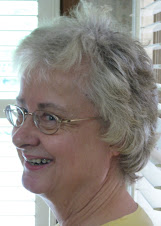
4:00 am. I woke up. I woke up with the image of those oyster shells vivid before my eyes. Frequently when I am planning a project, at some point I have a change of heart. Sometimes this happens in the middle of the night. It happened last night.
The startling blue and gold which stood out so brilliantly against the darkish neutrals. The splatterings of black. I started thinking of having an occasional black warp. Maybe I could have it repeat at regular intervals against the irregular size blocks. Or maybe a colored warp that I dyed black in spots. Maybe both.
How would I do this? The solid black threads are no problem. But the colored warp with black spots. Well, I could separate out threads and paint them. Oh dear, we are talking dyeing cotton and using MX dyes. I've used MX dyes but I have never cared for them. They are the devil to wash out and the dissolved dye keeps for only a few days. The acid dyes, on the other hand (which I use on silk) are easy to wash out, assuming that there is even any excess dye to wash out, and the dissolved dye keeps for ever. The last means much less mixing of powders. Both more convenient and less exposure to the danger of breathing in the dye powders.
Ahh, but there are some warm or hot water reactive dyes. I've not used them myself, but I know people swear by them, and so in my head I am thinking of going to the ProChem site and checking that out.
And then I start thinking of what I might do with painted warps if I turned the draft so that the treadling became the threading and the threading the treadling. This raises all sorts of new ideas, especially for warp painting possibilities.
STOP!!!! Enough already. I begin to realize that these shells have inspired a second project, not a change in this project. After all, the intent is an easy-to-wear cotton jacket for spring summer and fall (in South Carolina), casual enough to wear with my khaki's, but just slightly dressy enough to wear with linen skirts and pants. Whew. Back to sleep.
And today I have to make notes of all this so that I don't lose my thoughts from the wee hours of the morning.
By the way, the blanket warp is now fully covering the width of the loom and ready to weave.
 I think an unwoven warp is a lovely thing.
I think an unwoven warp is a lovely thing.What you see at the back of the loom, by the way, is my raddle. I usually always remove the raddle before starting to weave, but leave the lease sticks in. When I was in Santa Fe I learned that the Mexican rug weavers left their raddles in. I asked, why? The response was, why not? Then my friend Leigh tried leaving her raddle in and found she liked weaving that way. So tried it, and removed with fear and trepidation the lease sticks as well. I discovered that I liked that also. And, even though I had removed the lease sticks to help with finding a broken warp thread, I realized that the raddle would still make it quite easy to find them.






















